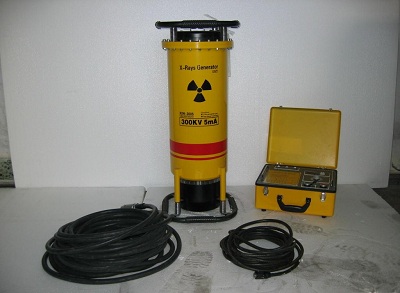
2016-11-11 Rongda test 1332 times

Detection Purpose: Inspection material inspection of mechanical parts, raw materials, weld and other defects
Detection range: Pressure vessel, construction engineering, ship, flange, pipe, metal alloy and weld
X-ray inspection is performed using x-rays (or γ Ray or other high-energy ray) can penetrate the metal material, and due to the difference of ray absorption and scattering action of the material, the film will be sensitive to light differently, so as to form a different blackness image on the negative plate, which can be used to determine the internal defects of the material.
X-ray flaw detection is an important means of quality inspection, quality control and quality assurance in modern industrial production. It is generally used for nondestructive testing of parts and components made of metal, nonmetal and other materials, casting and welding parts, to determine their internal defects, such as slag inclusion, cracks, pores, incomplete welding and fusion. In machinery, petroleum, chemical, aviation, shipbuilding, national defense and military departments, especially in the boiler pressure vessel weld detection has a very wide range of applications.
X-ray inspection can show the size and shape of the defects in the workpiece visually, so it is easy to determine the nature of the defects. But this method takes the X-ray film of high cost of equipment, such as slower inspection, the only appropriate probe porosity, slag inclusion, shrinkage cavity, porosity volume defects, such as quality but not quantity, free and should not be used for the cavity structure of diagonal welding, tee joint inspection sensitivity is low, not easy to find small clearances and forging defects such as cracks and incomplete fusion and tubes, rods and other profiles of internal delamination defects. In addition, radiation is harmful to human body and appropriate protective measures should be taken.
Last article: NO!
Next article: NO!